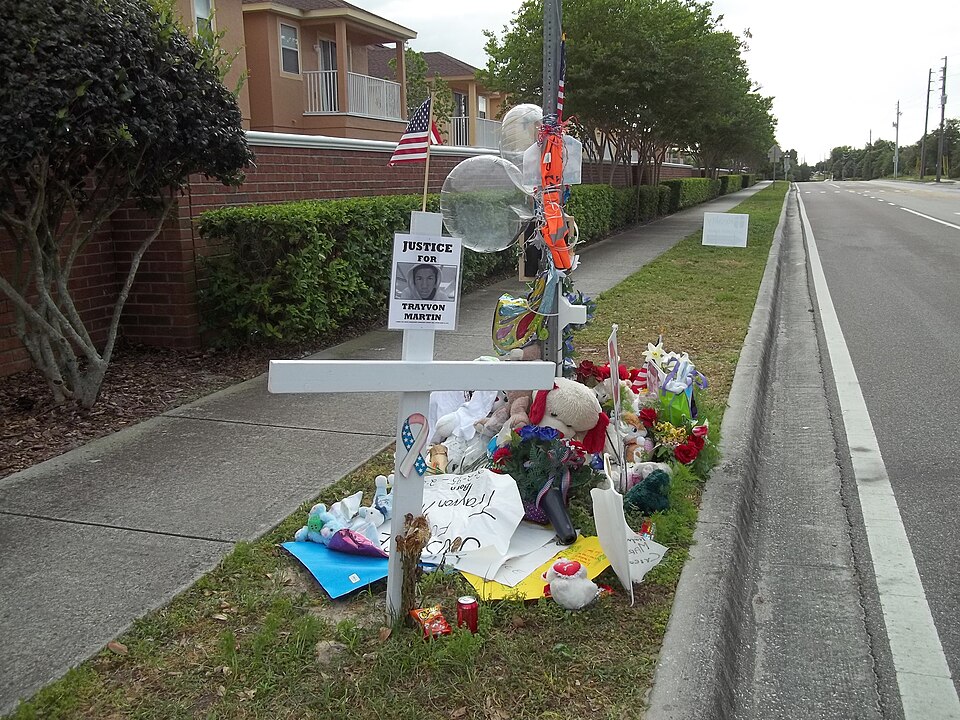
I began writing this on February 26, the thirteenth anniversary of Trayvon Martin’s death. Years have passed and the same question remains: freedom to, or freedom from? Said juxtaposition frames the entire relationship society had with the murder of Travyon Martin — although I know the jury didn’t view it that way. Did Travyon Martin have the freedom to live, or did George Zimmerman have the freedom from Blackness?
This question was pondered in nearly all facets of society: the media, the home, and material goods. But, most importantly, this question was debated by 12 jurors, who ultimately decided the latter. America, too, chose the latter. They always do.
On February 26, 2012, 17-year old Travyon Martin was returning from the store, Skittles and an iced tea in hand. George Zimmerman, a volunteer neighborhood watch member, was patrolling the community of which they were both residents. Zimmerman later saw Martin, believed his presence to be “suspicious,” called 911, and was told that it was not recommended to follow the young man. Yet, Zimmerman did so anyway. A scuffle ensued — who initiated the fighting on the ground is largely contested. Yet, what is not contested is the result of the interaction: Martin would later lie murdered on the pavement. To this, Zimmerman claimed self-defense, citing Florida’s infamous Stand Your Ground laws, which grant individuals the right to use deadly force if they reasonably believe they are in imminent danger, removing the duty to retreat. Except the law is to stand your ground, not chase them down.
If George Zimmerman was not at fault, then tell me: who killed Trayvon Martin? Martin didn’t fire the shot. The gun was in Zimmerman’s hands, but the weight of it — of history, of hatred — was carried by millions. Zimmerman later auctioned the weapon because, in this country, killing a Black child can make you rich.
If George Zimmerman was not at fault, then tell me: who killed Trayvon Martin?
When the case became sensationalized, news stations like Fox had difficulty affording young Black men their childhood, maturing them with inappropriate descriptions. Geraldo Rivera, a commentator for Fox and Friends, suggested, “you dress like a thug, people are going to treat you like a thug.” What does this statement accomplish, if not to cast the culpability upon Martin? MSNBC and BET used their respective airtime to counter the dominant narrative established by the likes of Fox News, but they didn’t discuss the history behind the narrative. These stations failed to mention that this was not an isolated event: Rather, racial conflict had long simmered, and had once again bubbled to the surface. If you had paid attention to the many racial struggles America has continuously and poorly grappled with, you would have recognized this as yet another chapter in a long, ongoing story. But for those unaware of the nation’s sordid history of race relations, Trayvon Martin’s murder may have seemed like an isolated tragedy rather than an unsolved problem for nearly half a millennium.
Beyond the cable news cycle, the internet became a breeding ground for cruelty — it was grotesque. White men in blackface, donning a hoodie with three “gunshot” wounds and fake blood smears, posed as Travyon Martin. The counterpart to the costume, portraying George Zimmerman, would wear a shirt labeled “Neighborhood Watch.”
A subsection of the internet turned the murder into a spectacle. People were “Trayvoning” – laying on the ground with Skittles and a beverage can — as if a mother never having a moment to celebrate her son’s birthday again is a meme-worthy moment. It was not just individuals engaging in the dehumanization of a young Black man; major institutions took part, too. Google’s algorithm, a primary source of information for millions, reflected the biases of a racist society, autofilling searches like “Trayvon Martin was…” with responses like “a thug,” “a drug dealer,” and “not innocent,” reinforcing the very narratives used to justify his murder.
This country has long since decided that Blackness is something to fear, something of which to rid itself. Trayvon was not the first: before him there was Emmett Till, Fred Hampton, and Medgar Evers. And he was not the last. Michael Brown. Tamir Rice. George Floyd. A history of stolen lives, stretching endlessly back and endlessly forward.
If killing people, even in self-defense, was thought of as a tragedy rather than the celebration of American freedom, perhaps we would not be here. If the thought of blood on one’s hands was met with horror, rather than celebrated in every popular medium, how would things be different? Instead, we live in a society far too comfortable with families burying their sons and daughters, too accustomed to offering justifications.
This country has long since decided that Blackness is something to fear, something of which to rid itself.
If we refuse to confront the conditions that led to his death, we too are complicit.
The question remains the same. America’s answer remains the same.
Elise Taylor ‘28 studies in the College of Arts & Sciences. She can be reached at elise.l.taylor@wustl.edu.